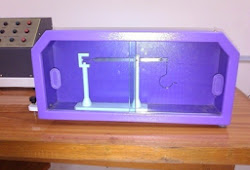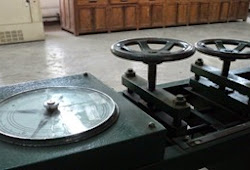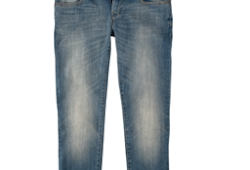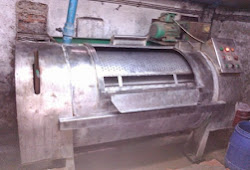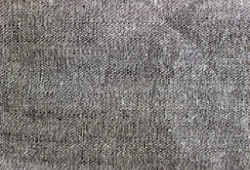Now You Know Characterization of Pore Structure in Textiles
Friday, 8 March 2019
Edit
Characterization of Pore Structure in Textiles (Part-1)

Arpita Kothari
M. Tech. Scholar
Department of Textile Technology,
NIT Jalandhar, India
Cell: +91- 7837-696041
Email: geniousarpita@gmail.com

Arpita Kothari
M. Tech. Scholar
Department of Textile Technology,
NIT Jalandhar, India
Cell: +91- 7837-696041
Email: geniousarpita@gmail.com
Abstract:
Pore structure is very complex and its distribution varies according to application area. The filtration properties can indirectly analyzed by pore size measurements and pore size distribution. There are so many characteristics which define the pore structure such as pore volume, pore size, pore surface area, permeability, throat diameter etc. Characterization of pore sizes is helpful in predicting the performance of fabric in use. In this study different characterization technique used for textile has been studied. One of them, Porometry has the unique ability to measure all the important pore structure characteristics. The technique is being constantly updated and has undergone many changes during the recent years.
Keywords: Characteristics, Pore distribution, Porometry, Permeability.
1. Introduction:
Pore structure of a textile material can be varied depending upon the application of fabric. Pore size and its distribution is one of the most important physical parameter. [2]Achieving a particular level of pore size is simpler in case of woven and knitted fabric as compared to nonwoven fabric. Again pore geometry is quite complicated and difficult to predict in nonwoven fabric. Pore size distribution in nonwoven fabrics is usually unimodel and relatively broad, whereas woven fabric have bimodal distribution because of inter-fibre and inter-yarn pores. The perfomance of nonwoven is governed by its properties such as fibre diameter, orientatin, pore size and packing density etc. In this study pore size and its distribution has been studied, how these affects the perfomance of nonwoven such as liquid and gas permeability, barrier property, filtration effciency etc.
Table 1: Importance of pore structure in different fields. [7]
Keywords: Characteristics, Pore distribution, Porometry, Permeability.
1. Introduction:
Pore structure of a textile material can be varied depending upon the application of fabric. Pore size and its distribution is one of the most important physical parameter. [2]Achieving a particular level of pore size is simpler in case of woven and knitted fabric as compared to nonwoven fabric. Again pore geometry is quite complicated and difficult to predict in nonwoven fabric. Pore size distribution in nonwoven fabrics is usually unimodel and relatively broad, whereas woven fabric have bimodal distribution because of inter-fibre and inter-yarn pores. The perfomance of nonwoven is governed by its properties such as fibre diameter, orientatin, pore size and packing density etc. In this study pore size and its distribution has been studied, how these affects the perfomance of nonwoven such as liquid and gas permeability, barrier property, filtration effciency etc.
Table 1: Importance of pore structure in different fields. [7]
Field | Application area |
Biotechnology and health care | Wound dressing Arterial support Bed sheets and pillow cases Drug storage and delivery Tissue growth and culture Substrate for organ culture Filtration media for body fluids Implants |
Filtration | Separation of solid from liquid/gases Separation of toxic products Protection in chemical environment Mite resistant products |
Household and clothing | Comfort wear Breathable shoes Diapers |
2. Characteristics of pore:
As already discussed that defining the characteristics of pore is very complex job but it can be characterized by following parameters. [5]
 |
| Figure 1: Different characteristics of pore |
Porosity or void fraction is a measure of empty space in material, and is a fraction of volume of voids over the total volume. [9]
P = Vv / [Vv +Vs]
P = porosity
Vv = volume of pores
Vs = volume of solid in the material
2.2. Pore path:
Tortuosity is a property of curve being tortuous (twisted; having many turns). There have been several attempts to quantify this property. Tortuosity is commonly used to describe diffusion in porous media, such as soils and snow. [9]
Ʈ = ( lc / l )
Ʈ = tortuosity
l = thickness of porous medium
lc= length of pore path
Ʈ = tortuosity
l = thickness of porous medium
lc= length of pore path
Related:
Flow through tortuous path is less.

 |
| Figure 2: Irreuglar cross-section of non-woven |
- May be very narrow
- May be broad
- May be multi-modal
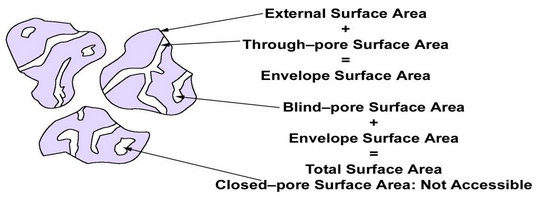
Total pore volume = through pore volume + blind pore volume + closed pore volume [9]
Sumber http://textilelearner.blogspot.com

